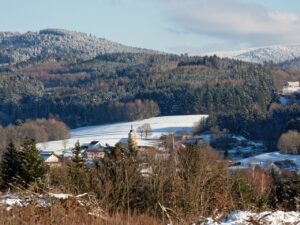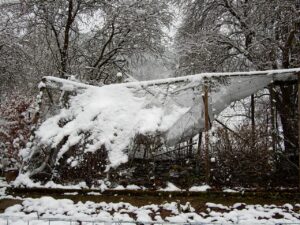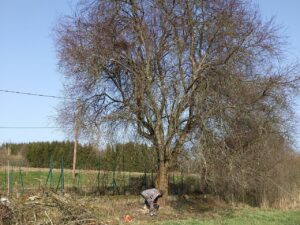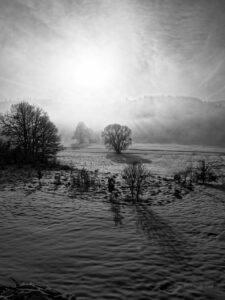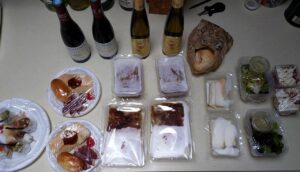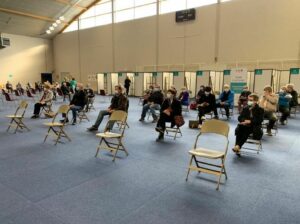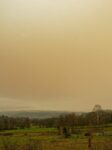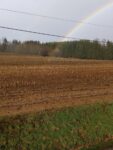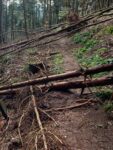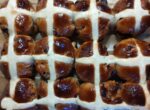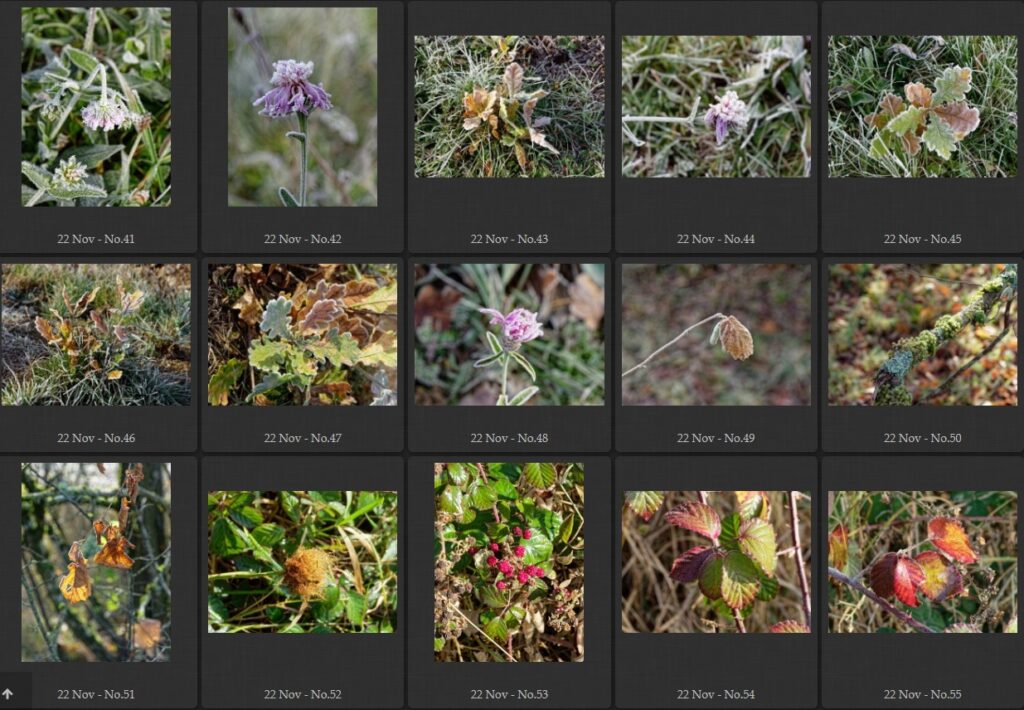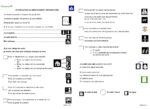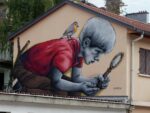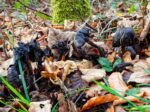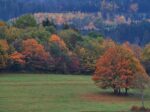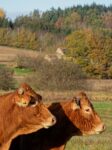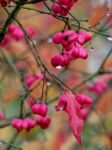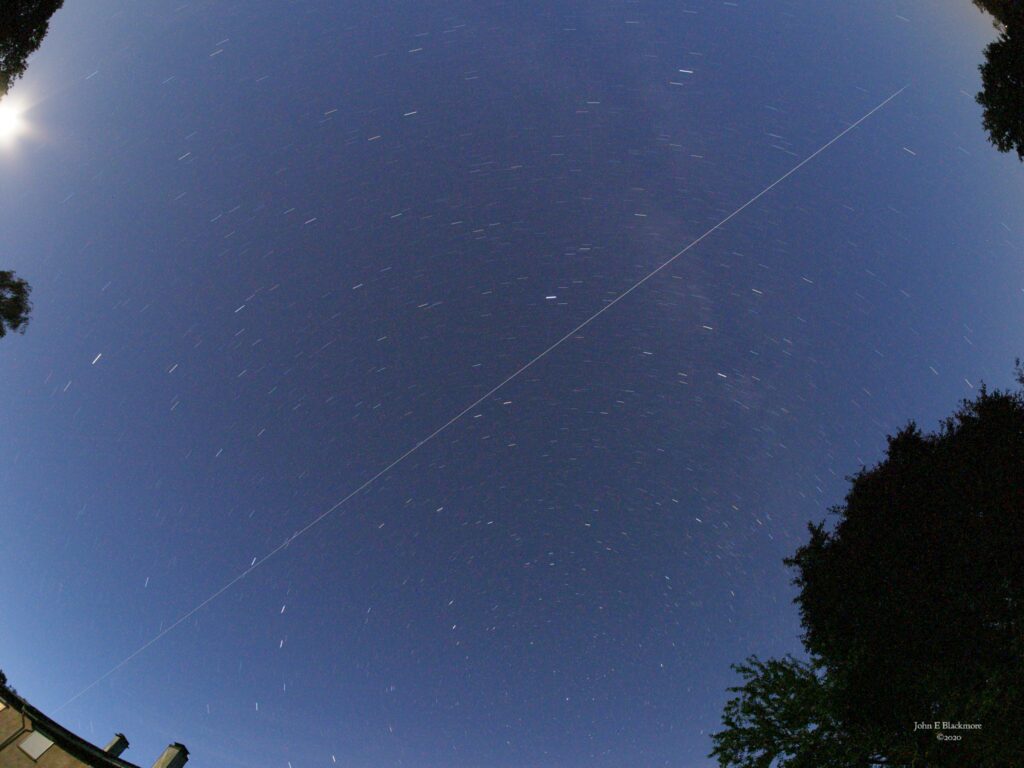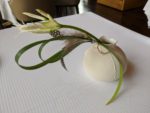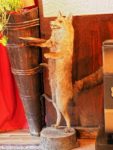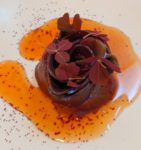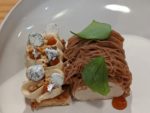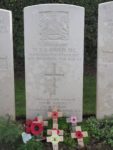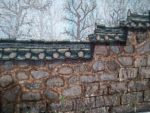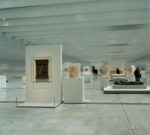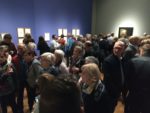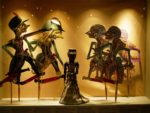To download a printable PDF version (no pictures)
click on this link E2E2021no1A.pdf (six A4 pages)
There are some links to photographs in the text;
clicking on the photographs will sometimes lead to
a larger selection of photographs
Over the last week of frosty nights and sunny days we have been enjoying the sight of white damson blossom and pink ornamental plum blossom. Looking out of the window this morning, it was impossible to distinguish the damson blossom from the white snow resting on the branches of all the trees.
In previous years we would have seen more blossom. But one of the casualties of the heavier snow back in January was our large walk-in fruit cage, which John and Alistair had constructed in 2011.
The snow on top of it froze and its weight caused the horizontal wooden laths across the top to break and the netting to sag and split, bringing down the netting, wood, and snow onto the blackcurrant bushes. So when the weather was finer we knew we had to dismantle the whole cage for a complete rebuild. For the past few years the fruit crops have been steadily diminishing as the branches of the row of trees (some probably over 50 years old) outside the south of the cage got denser and blocked out more and more sunlight. Now was the ideal opportunity to either prune or fell those trees; we had hesitated to even prune previously lest cut branches fell on the cage and damaged it.
But now a neighbour, Jacky Georgeon, who we consulted, said straight away that he’d be happy to do the work, having done all the home-decorating he could, and he arrived with his tools a couple of days later. John was to be seen at a safe distance in the field with a rope round his waist from the biggest tree, guiding its fall as Jacky applied the final cuts to the 50 cm trunk. The tree subsided in slow motion, but still too fast for Helen to capture with her phone camera. Georgeon’s pal, Mickael, the assistant commune employee, brought his tractor-driven log splitter to do the final cutting up into lengths to stack for three or more years before they can be cut to smaller logs for the stove. With Mickael paid, and Jacky warmly thanked with whisky and a share of the wood, John busied himself, stacking the lengths and producing three cubic metres of wood chips for the garden from the many smaller branches. But alas, no line of pink and white blossom there this year.
However, the logs will come in useful once they are seasoned. The day after we told Jacky that we did not need to light our wood-burning stove very often, we realised that the underfloor heating was not working. Having learned how necessary it was to have an introduction to workmen, we quoted our friends Roger and Dorinda when ringing Fafin the Plumber, and such was the magic of their names that he came round a couple of hours later to assess the problem and later installed a new expansion tank. He was a bit concerned that he could hear too much air in the pipes and suggested we should leave a valve open upstairs for five days and top up the system to see if that improved the situation. All the controls are behind a bookcase, so we removed all the books from the shelves to move it. Only then did John notice that he had on the last occasion fitted some wheels to the bottom of the shelves, so we could move the bookcase out without having to remove all the books first! The books remain on the floor as, although the heating is working, there seems to be no sign of a leak and there is probably another, as yet, unidentified problem.
 And now a quick glimpse back at Christmas, which seems a long time ago. We picked all the scarlet hips in the orchard as we had no holly for decorations, along with aromatic sage, pine branches, cones, dried hydrangea flowers, and branches of spindleberry fruits and decorated windowsills and added a wreath to the front door. John treated himself to a curtain of lights for the big French windows, where they lit up the strings of Christmas cards. Christmas cards and letters were extra special to both write and receive at the end of a very quiet year for everyone, and we enjoyed leaving them up till the end of January, and the curtain of lights until the official start of spring (but then the plastic Santas climbing up house walls and letter boxes around the village hung around for just as long, slowly deflating). Christmas Day itself was quiet, the carols from Kings College were a pleasure, and the village seemed deserted when we went for a short walk, though there were plenty of cars on drives, so perhaps everyone was sleeping off their festive fare. Our own Christmas fare was a bit different this year, featuring guinea fowl, ice cream log and panettone. Our gifts to each other have kept us entertained since then. John ordered a big pile of books for Helen, and he is still experimenting on the occasional clear nights with his new motorised tripod mount used to help photographing the night sky.
And now a quick glimpse back at Christmas, which seems a long time ago. We picked all the scarlet hips in the orchard as we had no holly for decorations, along with aromatic sage, pine branches, cones, dried hydrangea flowers, and branches of spindleberry fruits and decorated windowsills and added a wreath to the front door. John treated himself to a curtain of lights for the big French windows, where they lit up the strings of Christmas cards. Christmas cards and letters were extra special to both write and receive at the end of a very quiet year for everyone, and we enjoyed leaving them up till the end of January, and the curtain of lights until the official start of spring (but then the plastic Santas climbing up house walls and letter boxes around the village hung around for just as long, slowly deflating). Christmas Day itself was quiet, the carols from Kings College were a pleasure, and the village seemed deserted when we went for a short walk, though there were plenty of cars on drives, so perhaps everyone was sleeping off their festive fare. Our own Christmas fare was a bit different this year, featuring guinea fowl, ice cream log and panettone. Our gifts to each other have kept us entertained since then. John ordered a big pile of books for Helen, and he is still experimenting on the occasional clear nights with his new motorised tripod mount used to help photographing the night sky.
January seemed a long and dreary month, with dull weather, but as the hips and pine branches wilted and dropped, we brightened up the living room with purchases of pots of amaryllis, orchids and hyacinths. We also missed all the seasonal convivial French reunions and feasts. The Entre-deux-Eaux village council postponed their meal for the over-sixty-fives until 27 March and then had to change it from a lively gathering with music and dancing between courses, to a home delivery sometime after 2pm.
Our doorbell rang around 5pm (it must have been hard to estimate how long it would take to pack up and distribute nearly 100 meals). The first items which our neighbour Claudine handed over were four half bottles of very nice wines! It was a shame not to catch up on local gossip, but John appreciated the lack of noise, especially the enthusiastic musical contribution of castanet man. We missed the mayor filling glasses at the end with his potent home-distilled pear or plum liqueur.
Sadly the subject of Covid cannot be avoided in an update. In early January Toby, Rachel and Stella all had Covid and Toby sounded very unwell. Fortunately Rachel’s eldest daughter was at home and able to help with cooking and looking after Jacob and Farrah. One Sunday afternoon in early January, Leila was contacted, like others from the Coroner’s Office, and offered a vaccination appointment if she could get to a health centre north of Nottingham in two hours time. Presumably they had spare Pfizer vaccine to use up due to missed appointments? She had unpleasant side-effects for several days, including breathlessness, but we were glad she had some protection, as not all her work could be done from home. Sadly it was not enough to protect her from a new strain of the virus, as yet unidentified, which she got in March and from which she is still very tired over four weeks later. As a rare case she will contribute to a study, beginning with a blood sample to establish antibodies produced.
But as friends in the UK were having their first vaccine doses, you probably heard about the problems over here. The EU were slow to place orders for member countries, despite rather shrill accusations from Ursula von der Leyen about Britain preventing exports. The French had been hoping to develop their own vaccine, so were a bit dismissive of other efforts. People here are also more hesitant about vaccines in general after previous cautions (from compulsory Hepatitis B for children in the 1990s which was stopped as there was apparent, never proved, correlation with multiple sclerosis and one of the 2009 H1N1 bird flu vaccines which was linked to narcolepsy) and President Macron made negative pronouncements about the efficacy of the Oxford AstraZeneca one, which did not help confidence.
When the programme was extended from care homes to over 75s in February, Helen tackled the clunky booking system. The website always said there were no available appointments, but advised ringing up instead. The phone answer system always said there were no appointments available, but try the website. Then one morning the phone had no such message, but kept playing the same bit of music for 20 mins until someone replied, and efficiently booked Helen’s appointments for both the first and second doses.
In March, the vaccination programme was extended to the 65-74 age group who had co-morbidities. Oxford AstraZeneca vaccines, which were originally reserved for the under 65s, then allowed for all, and then reserved only for the over 55s, were distributed to doctors’ surgeries. Given the problems with the main online vaccination system, and despite not being eligible, John put in a request to our doctor to be added to his list for the time when the eligibility list was widened. Surprisingly, John was offered an end-of-day appointment a week or so later. Unfortunately, like other EU countries, France then suspended the AZ vaccine use over a period that included John’s appointment.
Meanwhile, Helen had her second dose in a hall behind the Town Hall in St Dié. The nurse there was talking about the forthcoming move to a much larger sports hall on the outskirts of St Dié where they would also have more doctors and nurses and be able to double the vaccination rate. At this point as Covid cases were mounting in France, hospitals were having to transfer patients to other parts of the country, vaccine distribution volumes increased with the addition of the Moderna vaccine. One Friday the booking phone line was again answered, and John was offered his first appointment three days later on the Monday in the new location together with a date a month later for the second.
That Monday turned out to be the first day in the new hall, so was a bit chaotic with patients not sitting in any order and doctors having difficulty locating their victims for preliminary interviews (though the nurses of course got their clients organised and sitting in treatment order for the actual vaccinations). Complicating matters were the inevitable mayor, entourage, reporters and photographers necessary on such occasions. We appear in some publicity photos, or at least our legs do. John was expecting it to be the Moderna vaccine but it turned out to be Pfizer.
A day after that, Macron announced a third French lockdown. So as Radio 4 broadcasts interviews with people excited over the easing of English restrictions, we embark on increased French restrictions (somewhat farcically, the form went through several revisions in a few days as various anomalies and simplifications were made). However, despite being more than 30 km away, we will still be able to go to Epinal later in April to complete our post-Brexit residence permits applications, giving photographs and fingerprints, if we tick the box on the reasons-for-leaving-home form marked administrative summons which cannot be carried out remotely.
We were very sad to learn during this period of the death of our good neighbour, Danielle Laine in her care home from what sounds like a heart attack. Our neighbour Danielle Barbe, who had visited her very recently, rang us that lunch time, and we realized why the church bells had been tolling. They tolled again a few days later for her funeral in the village church. We stood outside in masks as her coffin was borne in. There were quite a few people outside, mainly younger, and they all followed the coffin inside, although we went and sat on the bench under the tree by the road. A lot of the older people who would have known her well were not there though. On the way home Helen stopped to talk to one who was standing on her doorstep as the final bells tolled, and she sounded really glad to talk to someone. She lives on her own and has used canes to walk ever since we’ve known her, and was a good friend of Danielle’s. She said how few people in the village she knew these days. We shall remember Danielle for her lively conversation and readiness to help us during the last thirty years, although we know she had found life increasingly burdensome without her husband Pierre who died in September 2019. Their daughter Annick has been renovating her parents’ house, though we don’t think that she and her husband have moved in yet. The village bells also tolled for another village character, the ninety-year-old former military man, Gaston. Again it was not a Covid death and his mistress and her husband had been looking after him over recent months (which sounds very French).
However, it turns out that Covid is not the only current health threat. A few days ago we received an e-mail from the mairie which was headed Chenilles urticantes: prévention. It was a warning from the Regional Health Council of the Grand Est (oddly without any identifying images) about these nasty-sounding processionary caterpillars, which nest in pine and oak trees and descend and process in lines of up to a hundred in search of sunnier spots. Their hairs can be picked up and spread by the wind, and can cause intense itching, rashes, and sharp skin flare-ups. They can also irritate eyes.
A few days ago when John came in from the field and orchard where he had been leaning on the ground photographing fritillaries, daffodils and cowslips he complained of very itchy arms, but hadn’t seen any hairy processions. And talking of itching, Helen is hoping that whatever insect bit her last year has met a dreadful fate after she was covered in infected spots which caused her problems throughout the summer, autumn visits to the dermatologist and a dull rash that still itches.
But during the dormant period none of this deterred us from agreeable short walks in January and February and garden jobs in March. The compacted snow was quite treacherous on well trodden paths and the roads, but when the sun was bright, despite the cold wind in the sub zero temperatures, it was enjoyable walking across untrampled fields and along little-used paths. One morning three graceful deer skimmed across the snow as we glanced out of our bedroom window, and when we walked across that field their tracks were clear among the bird tracks.
Another day the sky was an extraordinary yellow colour, caused by sand from the Sahara, and one afternoon, after rain, we could see from the window a rainbow which ended in the field opposite. But we did not take our spades and dig up the crock of gold.
One morning we drove a bit further afield to the hills on the other side of Saulcy, and started our walk at the Col d’Anozel. It felt good to be walking in the wooded hills beyond the village, but we discovered that a lot of trees had fallen during recent high winds, including the previous night.
Someone had been earlier with a chain saw and the lower path had been cleared, but a higher path still had a lot of trees across it, which made scrambling over under and round them awkward, and we missed a track down to the starting point, so the walk was longer and steeper than intended! On a second walk at the Col d’Anozel we discovered that someone had left their picnic rubbish behind them – oyster shells and squeezed lemon halves. So very French!
And talking of French food, a great pleasure has been the discovery that our favourite restaurant, l’Imprimerie, is prepared to deliver their weekend menu as far as Entre-deux-Eaux from the book village some 47 km away. Each weekend chef Morgan and his staff prepare a three-course meal for a mere 20 euros, transport included, to be re-heated on delivery. So we have put in a weekly order, and after months of wearing old clothes have been dressing up for Saturday night dinner (Sunday over Easter). The menus have been very varied, highlights being his courgette and fish starter, Tom kha kai Thai chicken soup, buttery skate, beef cheek tagine, pear and almond tartlette, and his Easter special including the starter of St Jacques and sweet potato with an orange and almond sauce and his “Easter egg” dessert of a white chocolate “shell” with creamy “white” and kumquat “yolk”, not to mention the tasty nibbles before and after.
We were ready for our Easter special as we had been rushing to complete current tasks before the forecast change in weather from sun to snow and rain. John had been reconstructing and strengthening the collapsed fruit cage and had just finished attaching metal rails rather than wooden laths across the top of the sturdy upright wooden posts. Helen had finished weeding the larger flower bed, scattering flower seeds, watering and covering with some of the woodchips. The vegetable patch was, by now, rotavated, with beds marked out and paths between beds covered in more of the woodchips. So far onion, leek, parsnip and carrot seeds have been sown in the beds, with lettuce and rocket in the new lightweight cold frame (in fact it was so lightweight that it blew apart and scattered in high winds one night, but John has re-glued and weighted it down). In the potting area at the rear of a barn are loo rolls of broad bean seedlings, and recycled plastic punnets of onion and various flower seeds; not yet visible are the more recently sown beans and peas. But they will all wait till the ice saints of May have passed before being planted out. And when the fruit cage has its netting back on, we have pots of honeyberries (lonicera caerulea), blueberries and a tayberry to plant as replacements for the old blackcurrants and prickly worcesterberries.
It is perhaps as well that snow and rain have temporarily stopped outdoor work, as one of John’s Achilles tendons has reacted (perhaps to a lot of standing on step ladders) by giving up supporting him. So it is back to the computers in the attic and John’s family tree, Helen’s dwindling pile of Christmas books, evenings of crime and football on TV and the last of the Easter chocolate. Our other festive treats of John’s home-made hot cross buns have, alas already been consumed.
Till we meet again, we waft our best wishes in print across the Channel!

